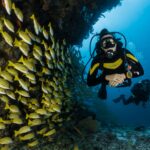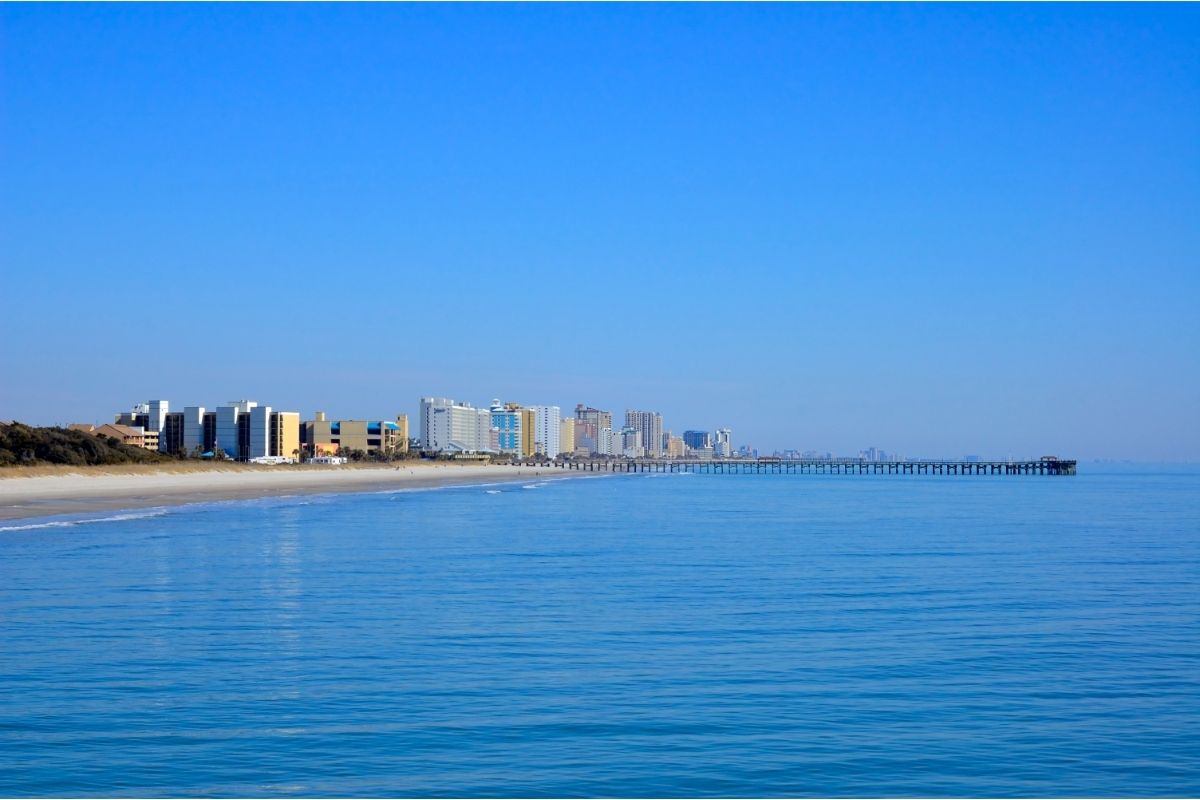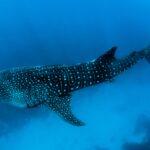Movies like Jaws have made plenty of people a little concerned about sharks in the ocean where they’re swimming.

After all, these giant underwater creatures look pretty scary on the big screen and in nature documentaries.
When it comes to San Francisco Bay, there certainly are sharks in the water but it shouldn’t be considered an area of ‘shark-infested water’.
In fact, if you’re swimming in San Franciso Bay, you definitely don’t need to spend time worrying about sharks.
In this article, we’ll be taking a closer look at why San Francisco has this reputation and why it’s not as scary as it sounds.
San Francisco Bay
Let’s start off by thinking about the body of water known as San Francisco Bay.
This is one of the most important ecological features of California and it makes up a great deal of wildlife in the area.
It is a total of 60 miles long and about 13 miles wide at its widest so it certainly takes up a lot of space on a map!
However, despite its large size, the bay is only really as deep as an average swimming pool.
About three-quarters of the entire bay is shallower than 12 feet. As you might expect, the deepest point of the bay is around the Golden State Bridge, where waters are around 370 feet deep.
However, relative to the rest of the United States’ bodies of water, San Francisco Bay only makes up a tiny proportion of the area that is inhabitable by sharks.
Interestingly, this body of water happens to sit within the ‘red triangle’, which is where roughly 40% of the nation’s shark population lives.
It’s no secret that plenty of sharks live in San Francisco Bay and they actually make up a great proportion of the area’s biodiversity so they’re certainly not being removed any time soon.
The Sharks Of The Bay

In total, there are 11 different species of sharks that have been spotted in San Francisco Bay.
One thing that they all have in common is that they are mostly bottom dwellers.
This means they tend to stay around the deepest parts of the water and very rarely come up as high as the surface.
Let’s take a closer look at each of the Bay’s shark species:
- Leopard shark: Sometimes referred to as zebra sharks, these guys are best known for their distinctive striped pattern. Leopard sharks are the most common species in San Francisco Bay and certainly one of the most recognizable. They can grow to around 6 feet in length and are harmless to humans. They prefer to feed off crustaceans and other creatures from the sea floor.
- Spiny dogfish shark: One of the smaller species of sharks, the spiny dogfish will only grow to around 4 feet long. However, that doesn’t stop them from hunting tenaciously. Because of their small size, they don’t pose much of a threat to humans.
- Broadnose sevengill shark: One of the last remaining species of its family, the broadnose sevengill is unsurprisingly best known for its seven gills. This species uses the safety of San Francisco Bay to reproduce, leaving their pups to mature in the deep waters.
- Brown smooth-hound shark: This species is known for living around California and even as far as parts of South America. Their body is often very slim and will only grow to around 2 feet in length, meaning they pose no threat to humans.
- Pacific angel shark: As the name suggests, this shark is native to the Pacific Ocean, all the way from Alaska to Chile. They are one of the calmest shark species in the Bay, only attacking if provoked and generally laying on the sea floor.
- Soupfin shark: This species is particularly useful within the San Francisco Bay ecosystem. It eats some of the small, bony fish that also live here and are themselves eaten by some other sharks. Interestingly, they are also harvested by humans for their desirable fin and liver which have plenty of health benefits when eaten.
- Salmon shark: Despite being one of the biggest sharks in the Bay at 12 feet long, the salmon shark mainly feeds on salmon fish. However, because of their size, they are still considered somewhat dangerous to humans.
- Blue shark: The blue shark doesn’t spend all of its time in San Francisco Bay and will often migrate great distances between visits. Since the 1980s, their population has shrunk by about 80%, leaving them vulnerable to extinction.
- Basking shark: The basking shark is an absolutely massive fish, with only the whale sharking being larger. There aren’t as many of them today as there once were but you’d definitely notice a 26-foot beast floating past you in the water!
- Swell shark: This shark species is one of the least threatening to humans. It exhibits very shy behavior and will often stay well away from any human activity. Not to mention, they only grow to around 2.7 feet on average.
- Pacific sleeper shark: Finally, the Pacific sleeper shark is one of the most powerful in the Bay. It has very powerful teeth and jaws, meaning it could do some harm to humans. However, they rarely go close enough to the surface to actually do anything dangerous to a human.
Is San Francisco Bay Dangerous?
Based on what we’ve learned about the sharks in San Francisco Bay, you might think it’s one of the most dangerous bodies of water in the world. However, this really isn’t the case.
The most dangerous shark species in the world rarely make visits here and, even when they do, they tend to stay well away from humans.
Also, there have only been five shark attacks reported in the Bay since 1962, proving that there really isn’t anything to worry about.
Final Thoughts
We hope you’ve enjoyed learning about the sharks of San Francisco Bay and how they operate.
It’s important to remember that, while there are sharks in the Bay, they are pretty much harmless and not something that you should be worried about when visiting the area.
- Is It Possible For A Shark To Swim Backwards? - August 2, 2022
- Are Leopard Sharks Dangerous? - August 2, 2022
- What Are The Differences Between Shark And Dolphin Fins? - August 1, 2022








